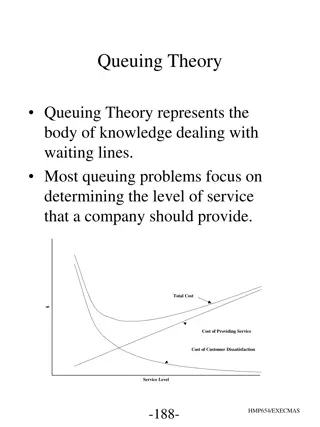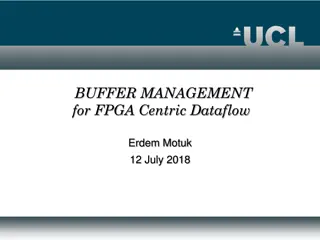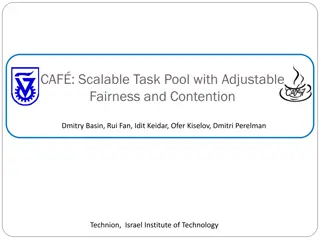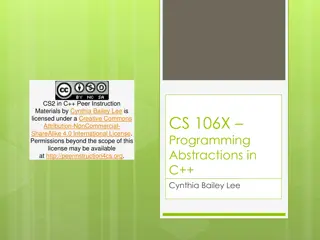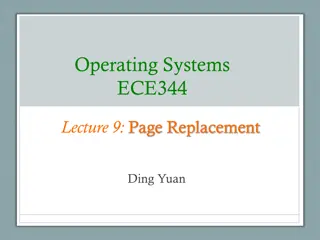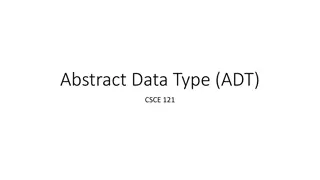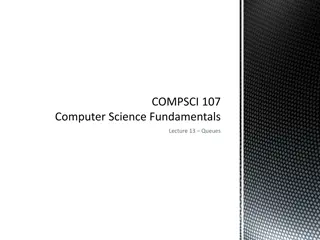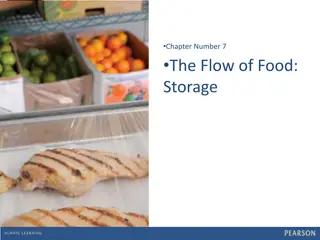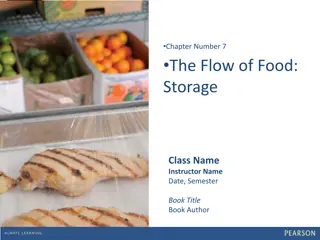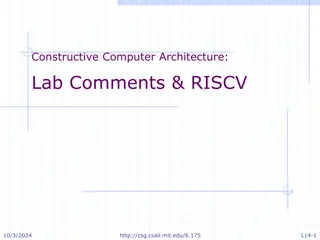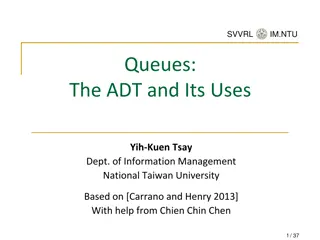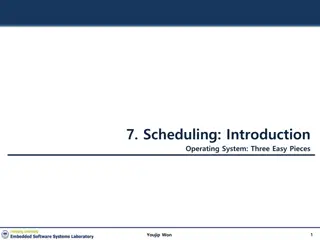Understanding Queuing Theory and its Characteristics
Queuing Theory is the study of waiting lines and service levels in businesses. It involves analyzing customer arrival patterns, service configurations, and queuing processes such as FIFO vs. LIFO disciplines. Characteristics include the generation of customers, homogeneity of populations, and determ
1 views • 25 slides
Understanding Lamport Algorithm for Mutual Exclusion
Lamport Algorithm, presented by Prafulla Santosh Patil, is a permission-based algorithm utilizing timestamps to order critical section requests and resolve conflicts. It employs three types of messages: REQUEST, REPLY, and RELEASE, where each site manages a queue to store requests. By ensuring commu
0 views • 15 slides
FPGA Centric Dataflow Buffer Management Overview
This overview discusses buffer management for FPGA-centric dataflow systems, including the use of DDR4 RAM, solid-state storage, FIFO structures, and trigger commands for efficient data processing and storage. It also covers the handling of compressed and uncompressed data volumes, proposed hardware
0 views • 12 slides
Scalable Task Pool with Adjustable Fairness
Explore CAF, a scalable task pool with adjustable fairness and contention, offering a solution to the inherent scalability problems of FIFO queues. The system allows for control over the level of relaxation, providing more fairness or less contention as needed. With a focus on bounded non-FIFO pools
5 views • 26 slides
Understanding Queues and Stacks in C++
Explore the concepts of queues and stacks in the context of programming in C++ with insights on their differences, applications like event queues, and a fun puzzle involving queues. Learn about FIFO and LIFO structures, and how they are used in various scenarios like hospital queues and boarding pro
0 views • 17 slides
Understanding Page Replacement in Operating Systems
Page replacement is a critical concept in operating systems, where memory management plays a vital role. In this process, pages are brought into and out of the main memory based on demand, leading to scenarios like page faults and eviction. Various strategies such as FIFO, LRU, and NRU are employed
0 views • 30 slides
Understanding Abstract Data Types (ADT) and Data Structures
Abstract Data Types (ADT) refer to a mathematical model defining data types based on behavior, operations, and parameters. They focus on what operations can be performed on the data, not how they are implemented. Examples include stacks (LIFO) and queues (FIFO). Data Structures determine how data is
0 views • 6 slides
Understanding Queues in Computer Science: Principles and Implementations
Explore the concept of queues in computer science, focusing on ordered collections of data following the FIFO principle. Learn about queue ADTs, implementations in Python, and delve into a simulation of a Printer Queue problem. Discover how to model printing tasks as random events and analyze the im
0 views • 15 slides
Managing USDA Food Receiving and Inventory Basics
Learn about the processes involved in receiving USDA foods, managing inventory using FIFO, understanding storage conditions, determining expiration dates, and interpreting best-if-used-by dates. Ensure proper handling and storage to maintain food quality and safety.
0 views • 15 slides
Food Storage and Handling Best Practices
Explore the essential guidelines for storing and handling food, including labeling, date marking, rotation techniques, temperature requirements, and prevention of cross-contamination. Learn about key terms like FIFO and ROP, as well as proper labeling requirements for on-site and packaged foods. Und
0 views • 21 slides
Food Storage Guidelines and Labeling Requirements
This chapter covers essential information on the proper storage of food, including requirements for labeling and date marking, techniques for rotating food stock using FIFO, temperature guidelines for storage, practices to prevent cross-contamination, and specific guidelines for storing various type
0 views • 21 slides
Understanding Conflict-Free FIFO in Computer Architecture Labs
Exploring the concept of Conflict-Free FIFO in computer architecture labs, this content delves into the grading of FIFO designs and the challenges faced in creating conflict-free implementations. It discusses the typical use of FIFOs for enqueuing, dequeuing, and clearing operations, emphasizing the
0 views • 28 slides
Overview of Fall Semester 2019 HPC Current Report
The Fall Semester 2019 HPC Current Report highlights changes made in resource allocation, job queue management, utilization analysis, and factors influencing job priority. Key modifications include adjusting memory per CPU, implementing limit enforcement, and changing fairshare weights. The report d
0 views • 20 slides
Understanding Queues in ADT: A Comprehensive Overview
Queues, an abstract data type (ADT), play a crucial role in computer science and real-world scenarios. This article explores the concept of queues, their properties like FIFO (First-in, First-out), and common operations associated with them. Through illustrations and explanations, you will gain a de
0 views • 37 slides
Scheduling Strategies in Operating Systems
Operating systems utilize various scheduling algorithms to manage the execution of tasks efficiently. This includes strategies like First In, First Out (FIFO), Shortest Job First (SJF), and Shortest Time-to-Completion First (STCF). Each algorithm has its advantages and limitations, impacting factors
0 views • 17 slides
